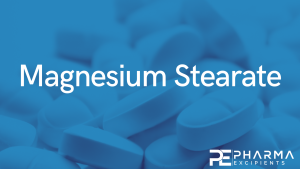Impact of material properties and process parameters on tablet quality in a continuous direct compression line

The current paper shows how excipient properties impact the process parameters and the final tablet properties in a fully integrated continuous direct compression line. Blend properties of low-dose (1% w/w) and high-dose (40% w/w) paracetamol formulations were evaluated and linked to the blending and tableting performance via multivariate models (Partial Least Squares analysis, PLS). Feeding behavior was analyzed separately, as the amount of active pharmaceutical ingredient (API) that ended into tablets was driven by random fluctuations in the API feeding behavior. The developed PLS models elucidated that formulation behavior was mainly driven by the concentration of the active pharmaceutical ingredient (API), explained by the distinct API properties. Excipient properties also had a substantial impact on formulation behavior.
Highlights
Blend properties of low-dose and high-dose formulations were evaluated with PLS
Formulation behavior was mainly driven by the concentration of API
Excipient properties also had a substantial impact on formulation behavior
The relative performance of fillers differed for 1%w/w and 40% w/w formulations
Processability of ingredients is crucial for formulation design
Generally, formulations with microcrystalline cellulose as a filler showed better compactability, lower hold-up mass, lower flowability and higher cohesion than formulations with different lactose grades. The relative performance of a formulation with different fillers differed for 1% w/w and 40% w/w drug loading. Granular and spray dried lactose grades increased in compactability ranking compared to anhydrous lactose when evaluating higher drug loading, due to the difference in morphology. It was shown that besides understanding the impact of excipients on the formulation performance, processability of ingredients is crucial for formulation design.
Download the full article as PDF here Impact of material properties and process parameters on tablet quality in a continuous direct compression line
or read it here
Materials
Spray dried lactose (SuperTab® 11SD), granulated lactose monohydrate (SuperTab® 30GR), anhydrous lactose (SuperTab® 22AN), granulated anhydrous lactose (SuperTab® 24AN), microcrystalline cellulose (Pharmacel® 102), silicified microcrystalline cellulose (Pharmacel® sMCC90) and co-processed lactose-lactitol (SuperTab® 40LL) were obtained from DFE Pharma (Goch, Germany). Twenty different formulations were produced with sodium starch glycolate (Primojel®, DFE Pharma, Goch, Germany), magnesium stearate (technical grade, Sigma Aldrich, Saint Louis, MO, USA) and paracetamol powder.
Pauline H.M. Janssen, Sara Fathollahi, Bram Bekaert, Dirk Vanderroost, Timo Roelofs, Valerie Vanhoorne, Chris Vervaet, Bastiaan H.J. Dickhoff, Impact of material properties and process parameters on tablet quality in a continuous direct compression line, Powder Technology, Volume 424, 2023, 118520, ISSN 0032-5910, https://doi.org/10.1016/j.powtec.2023.118520.
Read more about Magnesium Stearate as a pharmaceutical excipient here


